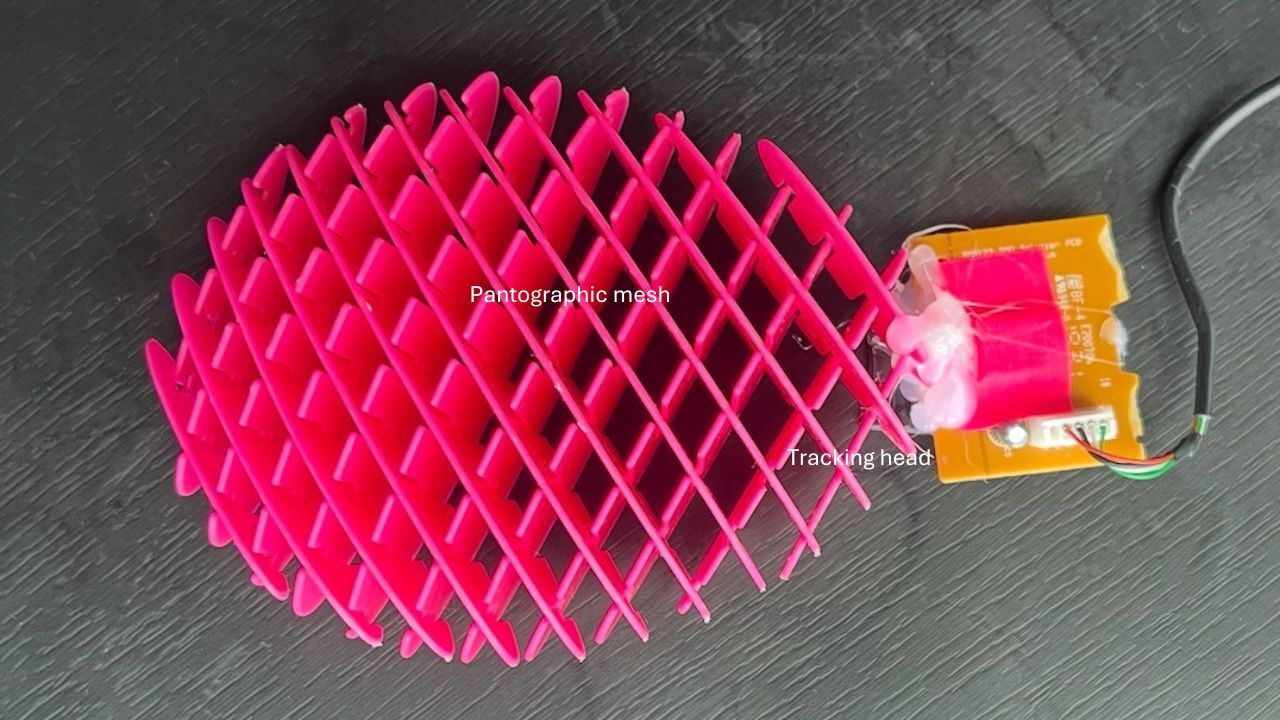
Get the Popular Science daily newsletter💡
Breakthroughs, discoveries, and DIY tips sent every weekday.
Many of us subscribe to the old adage, “If it ain’t broke, don’t fix it.” But what if that something was actually broken all along and we just didn’t realize it?
That’s the argument presented in an upcoming issue of the journal ACM Interactions by researchers from Nazarbayev University in Kazakhstan. In the article, associate professor of engineering and digital science and lead researcher Jose Berengueres claims that the contemporary computer mouse design, first introduced in 1968, is contributing to a rise in musculoskeletal disorders.
Although computer usage for the average person has increased drastically in recent decades, the mouse’s fundamental rigid design has remained largely unchanged. This form factor, originally developed with practicality and affordability in mind, requires constant wrist movement (sometimes hundreds of times per hour) which can lead to chronic disorders over time.
Researchers attempted to address these issues by introducing two entirely new ergonomic mouse designs. The first, called the “Fleximouse,” is a squeezable, pink mesh blob that allows users to move the cursor by making slight adjustments to their grip. The second, a vertical “A-frame” design somewhat resembling a drawing compass, was intended to keep the hand in a more comfortable position that requires less wrist movement overall.

And while the conventional computer mouse is far from perfect, testing suggests that its general adaptability to a wide range of hand shapes and sizes may contribute to its longevity. Still, the researchers say their findings could help inform the design of future mice by incorporating softer, less rigid features that more naturally align with the subtle movements of the human hand.
“The flat, rigid shape of today’s mouse forces the hand into an unnatural position,” Nazarbayev University Associate Professor and lead researcher Jose Berengueres said in a statement. “Over time, this causes continuous stress on the forearm and wrist. If we want to prevent injury, we need to rethink the design from the ground up.”
Squishy mice are fun, but lack practicality
The researchers argue that modern computer mice, along with other common handheld tools like pencils and screwdrivers, share a fundamental flaw: they are all primarily made of rigid materials that conflict with the human hand’s softer, more malleable surface. These tools, they write, aren’t designed this way because it’s necessarily optimal, but because rigid materials are more practical and affordable for mass production.
“In our opinion, the effectiveness of ergonomic devices could improve significantly if mouse design took into consideration that users’ hands are not rigid solids,” the researchers write in the paper.
With the Fleximouse, the researchers developed a new design made from squeezable pantographic mesh. Rather than requiring users to lift the mouse repeatedly, this device allows them to move the cursor by applying varying levels of pressure. The researchers then presented the design to a group of 25 college students, many of whom were gamers or frequent mouse users. Notably, almost half (11 of the 25) reported experiencing discomfort from prolonged mouse use.

Feedback on the Fleximouse was mixed. Researchers noted that average throughput (a measurement of the difficulty of a task completed) decreased by 25 percent when students used the squeezable mouse compared to a conventional design. Many students also reported a sense of “glee” when interacting with the playful, silly-looking device. Its vibrant pink color even made some of them smile.
But that novelty eventually wore off, and students began to miss common mouse features absent from the design, like scroll wheels and clickable buttons. Though fun to experiment with, the Fleximouse isn’t particularly practical for everyday work. It would also put a gamer at a significant disadvantage.
The researchers took that feedback and went back to the drawing board. With help from Tony Yu, a researcher at the University of Melbourne’s School of Design, they developed a new vertical “A-frame” mouse with additional input features. The design aimed to keep the user’s wrist and arm in a position that minimized excess movement. But it too had problems, most notably, issues with fit. The researchers noted that even a one-centimeter difference in hand size was enough to affect the control and usability students experienced. For the A-frame design to be effective, it would likely need to be painstakingly custom-designed for each user’s hand. While the traditional rigid mouse may be problematic for long-term use, it’s surprisingly effective in accommodating a wide range of hand sizes.
“Users experienced noticeable discomfort or impaired control when the fit was slightly off, emphasizing that personalized sizing is not just beneficial but essential in flexible input devices, the researchers write.
The computer mouse has outlived many challengers
This isn’t the first time engineers have tried to rethink the design of the computer mouse. Back in 1998, Apple experimented with a circular “hockey puck”–style mouse, which was discontinued a few years later after users complained it was difficult to orient. Researchers in Japan also developed an inflatable “Jellyclick” mouse that held its shape only after the user blew air into it. Needless to say, that design didn’t take off either. Other, less radical variations, like the “slanted mouse” and trackballs, have seen more commercial adoption, though they still fundamentally rely on a rigid exterior shell.
Despite those flops, researchers say advances in 3D printing and more modern “soft robotics” means there might still be an opportunity to introduce new device designs that are more “compliant with our bodies.”
“The mouse is long overdue for reinvention,” Berengueres writes. “Done right, it could make computing healthier and more comfortable for millions of people.”

More deals, reviews, and buying guides
The PopSci team has tested hundreds of products and spent thousands of hours trying to find the best gear and gadgets you can buy.

























